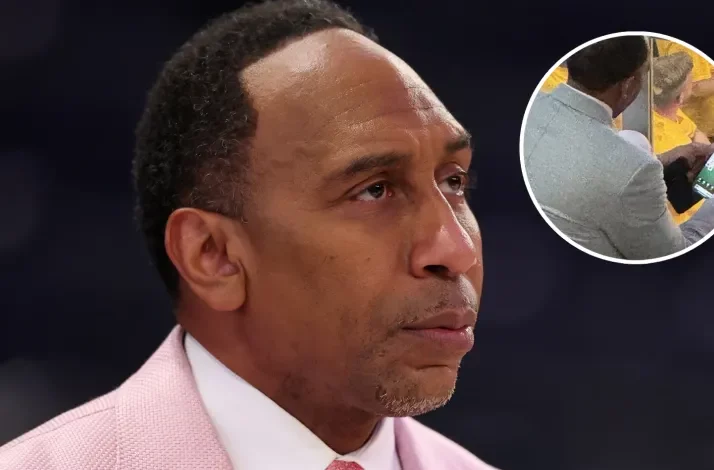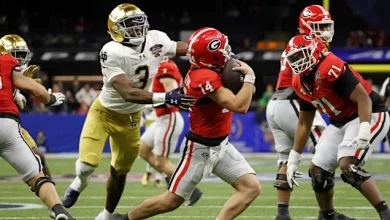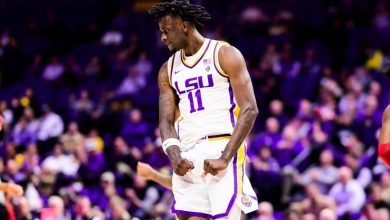ESPN analyst Stephen A. Smith was spotted playing solitaire on his phone during Game 4 of the NBA Finals, sparking mixed reactions from fans and viewers alike.

The NBA Finals are the pinnacle of professional basketball, drawing millions of viewers worldwide, eager to witness the best teams compete for the coveted Larry O’Brien Trophy. It’s a spectacle that commands attention, passion, and intense scrutiny from fans, media, and commentators alike. Amidst this high-stakes environment, moments of distraction or perceived disinterest can spark widespread discussion, often amplified by social media and the digital age’s instant commentary. One such moment occurred during Game 4 of the NBA Finals when ESPN analyst Stephen A. Smith was caught playing solitaire on his phone, a sight that quickly became a talking point across sports media and social platforms.
Context of the Incident
The incident took place during a pivotal game—a contest that could have significant implications for the series’ outcome. Typically, broadcasters and analysts like Smith are expected to be fully engaged, providing insights, commentary, and analysis that enhance the viewing experience. The image or video of Smith playing solitaire, seemingly disengaged, prompted immediate reactions, ranging from humorous memes to serious critiques about professionalism and dedication.
While the specifics of the moment—such as how long Smith was playing, whether he was doing so during a lull or during critical moments—are subject to interpretation, the incident nonetheless struck a nerve in the sports community. It touched on broader themes of media engagement, audience expectations, and the perception of professionalism in live sports broadcasting.
Stephen A. Smith’s Role and Reputation
Stephen A. Smith is a prominent figure in sports media, renowned for his passionate commentary, outspoken personality, and deep knowledge of basketball and other sports. As a key analyst on ESPN’s “First Take,” Smith has cultivated a reputation as a fiery and engaged commentator who often dominates discussions with his strong opinions and animated delivery.
His presence during NBA broadcasts, especially during the Finals, carries significant weight. Fans and viewers often look to his insights to deepen their understanding of the game, and his enthusiasm is part of his brand. Therefore, the image of him seemingly disengaged by playing solitaire can be interpreted as a departure from his usual persona—either as a sign of boredom, disinterest, or perhaps a momentary lapse in focus.
This incident raised questions about whether it was an isolated occurrence or indicative of broader issues—such as fatigue, disinterest, or the challenges of covering a long, intense series. It also prompted discussions about the expectations placed on sports broadcasters and analysts, especially those with high-profile roles during significant sporting events.
The Nature of Live Broadcasts and Viewer Expectations
Live sports broadcasts are uniquely demanding. Commentators are expected to be alert, insightful, and responsive, often reacting in real-time to fast-paced action. Viewers rely on them to provide context, analysis, and entertainment, especially during critical moments like the NBA Finals.
However, live productions are also unpredictable. Technical issues, moments of downtime, or even moments of personal distraction can occur. In the digital age, where clips and images are instantly shared and scrutinized, even brief lapses can be magnified.
The incident involving Stephen A. Smith underscores the high standards fans and viewers set for broadcasters. When someone as prominent as Smith appears disengaged, it can lead to perceptions of disrespect or a lack of professionalism, regardless of the circumstances.
Reactions from Fans and the Media
The response to Smith playing solitaire was immediate and varied. On social media platforms like Twitter, Instagram, and TikTok, users shared clips and memes, often humorous or mocking. Some fans questioned Smith’s professionalism, suggesting he was disrespecting the viewers or the gravity of the Finals. Others dismissed it as a harmless, human moment—acknowledging that even seasoned broadcasters can experience fatigue or distraction.
Sports media outlets also picked up the story, with some commentary emphasizing the importance of broadcasters staying engaged during live events. Commentary ranged from lighthearted jokes to more critical takes about the professionalism of sports analysts.
Interestingly, some defenders argued that moments like these are blown out of proportion and that Smith’s overall body of work and reputation should be considered. They pointed out that a brief lapse does not define someone’s professionalism or dedication, especially given the demanding schedule of covering multiple sports and events.
Broader Themes: Professionalism, Fatigue, and Human Moments
This incident opens a broader discussion about the nature of professionalism in sports broadcasting and the human side of media personalities. Smith, like many broadcasters, works long hours, often traveling across time zones, preparing for multiple shows, and maintaining high energy levels during live coverage.
Fatigue can set in, and moments of distraction are natural. In an environment where viewers expect constant engagement, even brief lapses can seem glaring. Yet, it’s crucial to recognize that broadcasters are human beings who, despite their expertise and passion, are susceptible to fatigue, boredom, or moments of disinterest.
The incident also touches on how social media amplifies minor moments, turning them into viral topics. A single clip of Smith playing solitaire can be taken out of context or exaggerated, leading to disproportionate reactions.
The Role of Media and Public Perception
The media’s portrayal of such incidents influences public perception. Some outlets may frame the event as a sign of disrespect or lack of dedication, fueling narratives that question the professionalism of broadcasters. Conversely, others may view it as an innocent human moment, emphasizing that even professionals have off days or moments of distraction.
Public perception is also shaped by the personalities involved. Stephen A. Smith, known for his fiery debates and passionate takes, often attracts both admiration and criticism. The incident played into existing narratives about his outspoken persona—either as a sign of his authenticity or as a lapse in professionalism.
The Impact on Stephen A. Smith’s Brand
Despite the viral nature of the incident, it’s unlikely to significantly tarnish Smith’s reputation, given his longstanding presence in sports media and his history of engaging, sometimes controversial commentary. In fact, some fans and followers might view the incident humorously, appreciating that even a high-profile analyst can have relatable, human moments.
However, it does serve as a reminder that public figures in media are constantly under scrutiny. Every action or inaction can be dissected, and maintaining a consistently professional image requires effort, especially during high-pressure moments like live broadcasts.
Lessons and Takeaways
- Human moments are inevitable: Even the most dedicated professionals can experience moments of distraction. Recognizing this human side fosters understanding and reduces unnecessary criticism.
- Social media magnifies minor incidents: In the digital age, a brief lapse can become a viral story, emphasizing the importance of context and perspective in evaluating such moments.
- Expectations vs. reality: Fans and viewers have high expectations for broadcasters, but it’s essential to remember the demanding nature of live sports coverage and the potential for fatigue.
- Balance and professionalism: While occasional distractions are normal, maintaining engagement during critical moments remains vital for broadcasters, especially during significant events like the NBA Finals.
Final Thoughts
The incident of Stephen A. Smith playing solitaire during Game 4 of the NBA Finals serves as a microcosm of the broader dynamics at play in sports media today. It highlights the tension between human imperfection and public expectation, the power of social media to amplify moments, and the importance of understanding the demanding nature of live broadcasting.
While some may view the incident as a minor blip—an innocent human moment—others see it as a reminder of the pressures faced by media personalities. Ultimately, it underscores that even the most passionate and dedicated professionals are susceptible to moments of distraction, and that understanding and perspective are crucial in evaluating such occurrences.
As the sports world continues to evolve, and as media consumption becomes more immediate and scrutinized, incidents like this will likely continue to spark debate. What remains clear is that behind the microphones and cameras are individuals navigating the challenges of their craft—flawed, human, and occasionally caught in moments that become part of the larger sports narrative.









